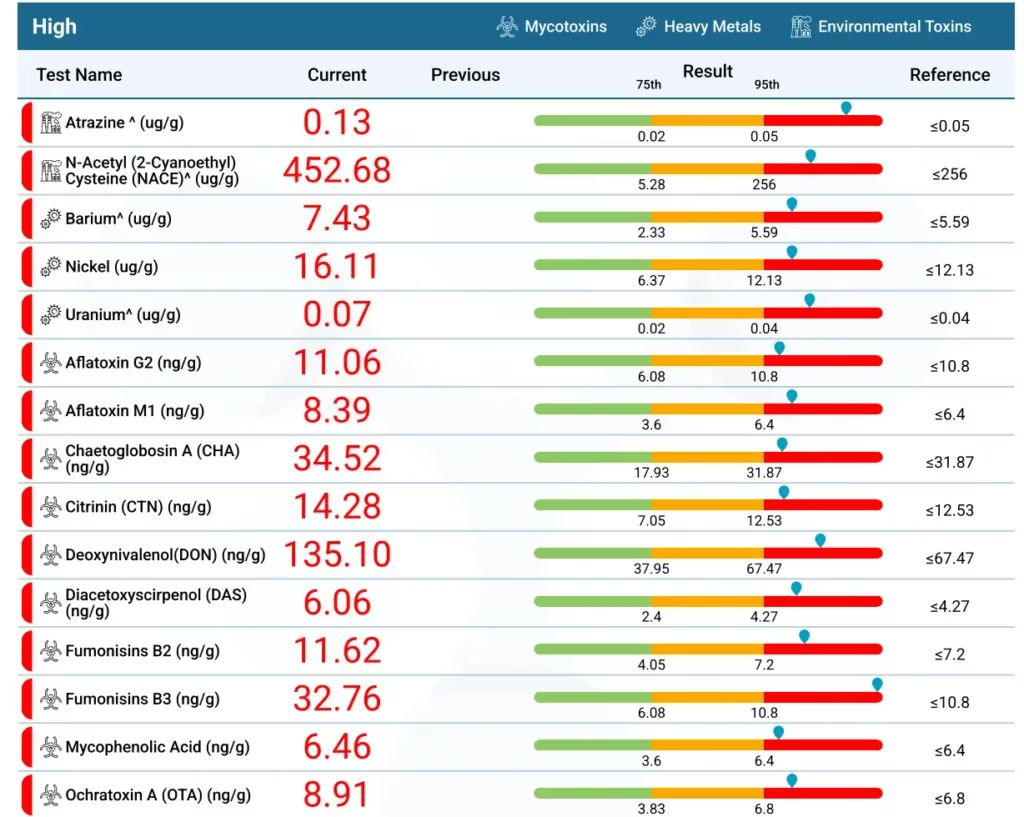White blood cells are your body’s soldiers. When their numbers drop, germs win. Many people think only sickness does this. But mold, heavy metals, and pollution can also knock those numbers down.
Meet Jane – A Real-Life Case Study
- Age 54
- White blood cell count: 2.4 (healthy range is 3.5–10.8)
- Big clues: joint pain, hot flashes, rashes, low strength
Doctors ran basic tests and shrugged. She still felt awful. That’s when we looked deeper.
The Trio Nobody Checks: Mold, Metals, Pollution
Mold Poisons (Mycotoxins)
Heavy Metals
Lead, mercury, arsenic, and other dangerous heavy metals hide in water, fish, and old pipes.
Environmental Pollutants
Plastic chemicals, farm sprays, factory fumes. They pile up inside you. Each one can hammer white blood cells and spike C-reactive protein (CRP), a marker for swelling and pain.
Environmental Pollutants
- Toxins leave the body through urine.
- Levels in urine can be 100 – 1,000 × higher than in blood.
- One simple sample shows mold, metals, and pollutants all at once.
Jane’s results lit up like a Christmas tree—10 molds, 4 metals, 12 pollutants in the danger zone.
Quick-Start 3-Step Healing Plan
- Cool the Fire
- Anti-inflammatory food
- Gentle movement
- Deep sleep
- Open the Drains
- Support liver, kidneys, and bile
- Drink clean water
- Catch & Carry Out Toxins
- Use safe binders
- Regular bowel movements
- Retest in 90 day
Small steps stack up to big wins. That’s “poly-therapy”—many tiny actions working together.
Frequently Asked Questions (FAQ)
A low white blood cell count can be triggered by hidden toxins such as mold (mycotoxins), heavy metals like lead and mercury, and environmental pollutants such as pesticides and plastics—not just sickness or infection.
Doctors can run advanced urine tests that measure levels of mold toxins, heavy metals, and environmental pollutants. These tests often reveal much higher toxin levels in urine compared to blood, making them a reliable way to detect hidden culprits.
You can support your immune system by reducing inflammation with healthy foods, improving detox pathways (liver, kidneys, bile), staying hydrated, using safe binders to carry toxins out, and ensuring regular bowel movements. Retesting every 90 days helps track progress










